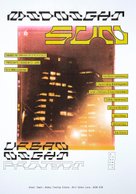Expectant air
by Alexander Hill, Associate at Chipperfield Architects, London
Traditional representation of architecture; drawings, models, photographs, is dominated by the visual. This limited palette is narrowed further because their purpose is usually confined to promotion, instruction and occasionally education. What used to be called, somewhat inappropriately, the “artist’s impression” has been replaced by the computer generated image or CGI. These glossy imaginings are, of course, not generated by computers but by people and are usually crude approximations of
the unreal, caught in a perpetual and shadow-less sunshine or geographically equivalent twilight.
In an age where digital representation is so advanced that the genuine and simulated are easily mistaken these makeshift images are reassuringly fake. For more tangible representations
or reflections on architecture we should look elsewhere.
Curiously, the most ‘real’ descriptions
of architecture are to be found within the works
of fictional prose. Writing can conjure the full sensory spectrum of our experience. A novel’s depiction of the built environment is untainted
by the professional interests of the design and building industries, and importantly architecture
is seldom its main subject. In the domain of a novel encounters with buildings and landscape may
be of central importance or incidental, they may
be a setting, a protagonist or both, banality may
be as noteworthy as beauty. This mirrors our own experience of architecture, it is subliminal, background and aggregate. Of course, that isn't
to underestimate the impact our environment has on us, on the contrary a novel dissects how we perceive our surroundings and their significance, this is inherent in its form. Authors of literature are on the whole detached from the specialised business of making buildings, the criteria and conventions
of design, however, they are often concerned with settings, how we live, and how we interact with others. The author is indifferent to ‘quality’ and ingenuity in architecture but is more often sensitive to experience, consequence, and connotation, suggesting that some of the deepest thoughts
on the subject might be found not in professional criticism but in novels.
According to Irish novelist Iris Murdoch, the novel must ‘combine form with a respect for reality with all its odd contingent ways’. Her works are infused with the unexpected, the dissonant and the unremarkable and as a result, Murdoch’s work holds some of the most insightful and subtle evocations
of architecture to be found. It is problematic
to extract such moments as without their context these fragments lose some of their pathos;
a Murdoch novel is an amalgamation rather than
a sequence of set pieces. However, take this passage from The Sea, The Sea.
The main staircase turns inward to reach the space of the upper landing. I call this a ‘space’ because it is a rather odd area with
an atmosphere all its own. It has the expectant air of a stage set. Sometimes I feel as if I must have seen it long ago in a dream.
It is a big windowless oblong, lit during the day through open doors, and adorned, just opposite the ‘inner room’, by a solid oak stand upon which there is a remarkably hideous green vase, with a thick neck and a scalloped rim and pink roses blistering its bulging sides.
I have become very attached to this gross object. Beyond it, there is
a shallow alcove that looks as if it should contain a statue, but empty resembles a door.
In this story Charles Arrowby, a theatrical celebrity, escapes to a remote and ugly house by the sea planning to spend a time of ‘recollection in tranquillity’. Endearingly self-aware of the faintly ridiculous and pompous nature of this quest for seclusion, his reminiscences are attended to by
the unwanted appearance of various characters from his past who disrupt not only his vision of retirement but also an idealised view of his former life. The house itself is the first challenger, wrong footing him by ‘playing up’, but as they become acquainted it is increasingly a surrogate consciousness: ‘as if the house were a sensitised plate which intermittently registered things which had happened in the past—or, it now occurred
to me for the first time, were going to happen
in the future’. The house and landscape seem
to grow more sentient and powerful while a series
of unexpected events render him weakened. Eventually Charles’ ideal to dislocate himself
from the world is wrenched away. As with other works by Murdoch there is an ambiguous almost mystical force at work that seems to operate outside the novel as well as within, as though
the story is not written but is rather a coalescence of events, people, thoughts and place around
an elusive central truth. In this territory, human mastery is fragile and characters find that the ground shifts beneath them.
In other works, this fluid orchestration extends
to a whole city. In Under the Net the central character shuttles between apartments and acquaintances, 1950s London is a benign but mutable presence as if the city itself is subtly directing the drama. Murdoch’s work constitutes
a kind of grasping at reality which is constructed
by the physical as much as the intellectual, she can draw meaning out of light, weather, architecture
in a way that builds not only a story but an outlook or philosophical position. Take the innocuous observation from The Sea, The Sea that ‘The room was dark, shut in by the rain which was falling outside.’ Architecture does not prefigure a certain quality of light, rather the light and weather become architecture, physical and bounding.
The absolute quality of the house, its detachment and the independence of mind it represents for its owner is destabilised and more broadly we are prompted to consider the changeable nature of things. Initial impulses to change aspects of the house give way to an acceptance of its idiosyncrasies which echoes the protagonist’s realisation that he cannot direct his life as one would a play, his fate was unknowingly sealed long before in what Murdoch terms his ‘prehistory’.
Returning to the parallel between the author and architect, consider how either handles the theme
of this publication, light and its relationship to the city and our way of life. The designer is typically concerned with practicalities (lighting an office adequately, orientating a kitchen) or compositional effect (illuminating a certain wall, framing a view, accentuating a form). In other words, light is deployed and controlled in very specific ways.
From the Medieval stained glass window to the contemporary ‘curtain wall’ the treatment of light
in architecture has also been attributed aspirational or moral qualities. The health enhancing qualities
of large open expanses of glass in buildings of the Modern Movement was an antidote to the slums
of the nineteenth century and represented progressive clarity and purpose. More recently
the ‘transparency’ of glass has dubiously become equated with accountability and is used as such by commercial organisations without irony, or much regard for local environmental conditions, across the globe. In the midst of a climate emergency,
the proper use of both natural and artificial light
is being re-evaluated, with ethical implications.
By contrast the novelist is sceptical of simplistic
and aspirational projections and looks upon our environments with a critical eye. The depiction
of elements such as light is not for mere effect,
it can contribute to meaning, invoke a familiar sensation or emotion, and can lend authenticity. Murdoch in particular has a preoccupation with reality in all its volatile and arbitrary ways and
her description of light are consistent with this,
in their variety of expression and acuity.
This conviction overrides any a priori schema
or individual narrative.
It is liberating for the designer to read an author such as Iris Murdoch because one sees things as they are, there are no neat assumptions, no definite values. Her writing embodies an attitude that
is antithetical to most architects’ methods of careful manipulation. It exemplifies a kind of looseness that permits both the general and peculiar. She is attuned to the temporal, the life lived rather than the genesis. As an architect
one feels for the lead in The Sea The Sea, whose plan goes awry and whose ‘project’ fails, but one wishes to identify more with the writer and her insights, to share Murdoch’s commitment to the reality and complexity of our existence, to attend
to it thus and to revel in it.
Most instructive though might be Murdoch’s attitude to her characters, the inhabitants of her work.
In The Sublime and the Beautiful Revisited she
uses architecture as a metaphor explaining that
the novel should be ‘a house fit for free characters
to live in’. Murdoch’s conception of the novel
as a house is telling, her writing creates the conditions for her characters to access a reality independent of the author. This autonomy also extends outside the work itself, after being published it is read, interpreted, shared, translated, edited. Turning to architecture again, it will be dismantled, reused, absorbed. She adds that ‘in the case of the novel, the most important thing to be thus revealed... is that other people exist’. If we think of our buildings and our landscapes, those we have inherited and those we propose, with this self-effacing spirit, we leave room for the unexpected, the unsightly, we do not overprescribe and do not fight the unavoidable. In other words, we want our buildings to allow space for all our multiplicity, our varied routines, habits and our vagaries.
The Value of light
by Rut Blees Luxemburg
After a storm—the skies brighten up. In the German language, Aufklärung, the clearing up after darkness and corruption, is the term given to the Enlightenment. More light, Goethe requested from Ottilie, just before falling into eternal slumber. More light, and its desirable offspring, luminosity, we hanker after, like so many demented Nachtfalter, nocturnal moths, spiralling in their death drive.
Yet it is no longer the orientating light of the stars or the coastal sunset we are after, not the Naturtheater of light and space; it is the artificial, reflected light we crave, constructed throughout history, from the Venetian golden glow of the mosaics of St. Mark’s to the refracted glimmer of the evening sun on the expensively-cheap façade of a Canary Wharf Tower… to the shiny bargain pixels of the CGI, light as rock-bottom time crystals, a cyber-luminosity, eye-candy, our promise of enlightenment.
We crave these luminous crystals and the resulting images, CGI generated prototypes. We have trained ourselves to believe the infinite crystal pixel, as the virtual suggestion seems in any case more rewarding than the proposed realisation. This confidence trick could only happen because the experience of the luminous is swift, weightless, a flutter of a possible epiphany and therefore so enjoyable, so radical, so transformative.
A reckoning.
Rut Blees Luxemburg, April 2020
Felicity Hammond
VERTICAL WINTER GARDENS
by Casper Laing Ebbensgaard
As the name reveals, the winter garden originally served as a garden for slow germination, a food supply in winter and a therapeutic retreat from the darker living spaces in the main household. Trims, beams and layers of glass, plants and leaves, refract and reflect incoming sunlight and fill the winter garden with a unique brilliance and play of shadows, nourishing plants in periods of dormancy and nurturing the human body and soul when feeling despondent and dejected from the cold. It is an architec/tonic for horticultural and human life to grow wild. In the vertical city where light, air and space are preciously scarce, it is no wonder the winter garden has gained popularity of late.
Building on a long tradition of vertical landscaping—hanging gardens, vertical forests, sky gardens and garden skyscrapers—the winter garden is a welcome call for architects and planners, who strive
to improve living conditions in the vertical city.
As a flexible balcony space, the winter garden
is a tool for manipulating the sensory experience
of high-rise living: it extends sightlines throughout the flat, making the habitable space seem roomier; it lets in more light, making the living spaces seem lighter; it opens up onto a larger surface of the city, making the apartment seem larger. More spacious, airier and more open, the vertical winter garden chimes with the restorative utopias of the past—a kind of architectural lovechild between Ebenezer Howard’s Garden City and Le Corbusier’s towering living machines. With the densification of London putting increased pressure on living space and with prolonged periods of domestic confinement seeming ever more likely in the near future, the perceptual trick of letting more sky, light, and city into the home is an appealing proposition for future high-rise design.
In writing about a photograph of his mother, sitting in half-shade in a winter garden, Roland Barthes observed that ‘it achieved for me, utopically, the impossible science of unique being’.[1] Whether
it is through an archival photograph, computer-generated imagery, or a physical visit to a winter garden on 20-something floor, the persuasive sensibilities of this brilliant space are intimately tied to our existential yearning for recognition.
The memory, the imaginary and the embodied experience of the carnal warmth that radiates
and touches us in the winter garden awakens
this utopian dream of being unique, of a sprouting self in the dense city. It is a proposition for vertical inhabitation that turns outwards in order
to reach inwards.
As with all utopias though, there is a cunning and almost underhand logic to its seductive appeal. Externally, the winter garden has a similar effect
to the recessed balcony, allowing the building
to take on a bolder, structural form as the uncompromising miscellany of domestic clutter
and protruding elements recede behind the reinforced frame.
At night, the incoherent illumination of interior spaces—constantly shifting to internal movement—
is cushioned and softened in ways that maintain
a harmonised façade. The winter garden refracts and refines the affective excess of the residential high-rise, 24/7, with an almost
[1] Barthes, Roland, Camera Lucida: Reflections on Photography. (London: Vintage Classics, 1980), p. 84, emphasis in original.
cytoplasmic effect: it contains the wild, uncoordinated life of the tower block, and holds
it within its nourishing grasp, while blending the obtrusive architecture smoothly into the cellular structure of the wider city. It can be shut off like
a membrane, hermetically sealing homes against potential air and noise pollutants, providing architects, planners and developers with a surface instrument for shielding life and thus allowing vertical expansion in areas that otherwise would compromise standards of living. Yet, if we think beyond the biopolitical constrains that are forced through planning conventions and building regulation, the winter garden also holds the potential to create an entirely new language
for vertical living; a new vernacular for wild and unruly life in the vertical city.
In tracing the seedlings of this nascent potentiality, we might look towards the people who inhabit these cells of light, lettuce and labellum. While you might be surprised to find that there is actually very little ‘gardening’ going on in the vertical winter garden,
it doesn’t prevent it from cultivating a whole host
of life forms to take root. Its flexible, adaptable and seemingly organic living spaces increase the realm of vertical living and propose ways of inhabiting
the vertical city that achieve the utopian dream
of unique being.
The densification of our cities requires ways
of thinking, dreaming and building that make
it possible to inhabit its edges without compromising our standards of living.
In this third volume of The Dark Preview, we
explore how we might think about light as
a material condition for rethinking and reworking how we inhabit, imagine and design the future vertical city.








